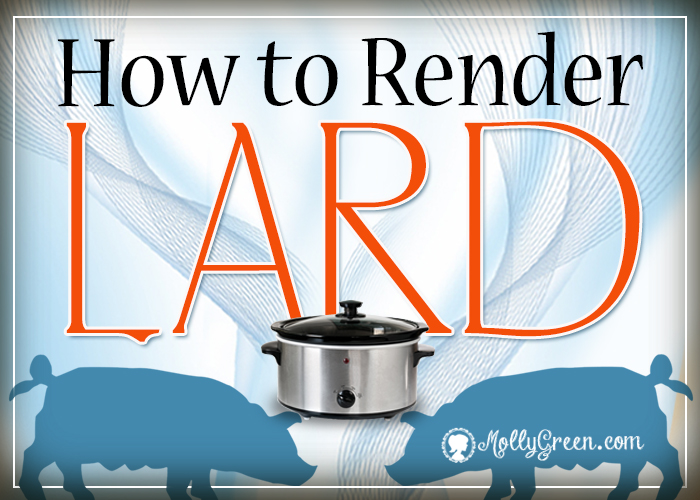By Samantha Martin
Lard. It is one of the most versatile and useful items to occupy the kitchen of any homesteading or health conscious person. Lard is used in many recipes, including biscuits and pie crusts, and many a dairy farmer has mixed lard with cayenne pepper to create a stimulating udder cream. What was once regarded as an artery clogging fat is now esteemed to be a natural and healthy fat when made from naturally raised animals. Forested pigs that are raised without drugs yield a healthier fat than what can be found in most stores. If you are fortunate enough to buy or raise a forested pig, you likely have some fat sitting in your freezer. Here is your chance to learn how to render lard with a slow cooker and bring back to life a skill that our grandparents used.
If you mention to most any one that you plan to render lard you will get looks of fear and stories of the dangers of lard rendering. Don’t believe the stories and have some faith in the technology that has brought to almost every kitchen a slow cooker. Rendering lard in a slow cooker is not only safe but easy.
Lard Rendering Supplies:
- 1 slow cooker
- 3-6 lbs. of pork fat, thawed
- 1/2 -1 cup of water
- Ladle
- Cheesecloth
How to Render Lard with a Slow Cooker: Step-by-Step Instructions
Step 1. Place Fat in crock pot and add water: Start by placing all of the fat into the slow cooker and adding the water. Add enough water to have about 1/2-inch water depth in the bottom of the crock. The water is simply placed in the cooker to keep the fat from burning.
Step 2. Slow cook for 6 to 8 hours: Make sure the lid is secure and allow the crock to cook on low 6–8 hours. After this time there will be yellow liquid along with some pieces of tissue. This is connective tissue and is often referred to as cracklings. While the fat cooks there will be a pig fat smell and this is normal.
Step 3. Filter the fat: To filter the liquid fat, secure a piece of cheesecloth over a canning jar opening. A rubber band or a jar rim is helpful to keep the cloth in place. Slowly ladle liquid fat into the jar, allowing the cheesecloth to catch any unwanted debris. Be very careful while filtering the fat as it is extremely hot! Remove the cheesecloth filter and secure a lid to the jar.
Step 4. Cool and store the lard: Allow the fat to cool at room temperature undisturbed. Once it is cooled completely it will be a pretty white color and can be stored in the refrigerator up to a month or in the freezer for up to three months. The lard will still have a slight pig fat smell, but this odor will not carry over into any foods you bake.
Step 5. What to do with the cracklings: The cracklings that are left behind can be cooked longer, until they are crispier, and eaten plain or on a salad. They can also be given to the family dog as a treat, either soft or crispy.
Now that you know how to render lard, there is no excuse to not bake fresh biscuits and pie crusts with homemade lard. You will notice a huge difference in how these items taste with freshly rendered lard and you can finally use up all the pork fat sitting in the deep freezer!
Samantha Martin lives in north Georgia with her husband and seven children on a thirty-acre farm. She has a growing herd of Jersey cows and wool sheep. In her spare time she likes to quilt, knit, eat dark chocolate and sit on the front porch with a glass of sweet tea. Follow her large family and farming adventures on her blog http://mybarefootfarm.com/.





